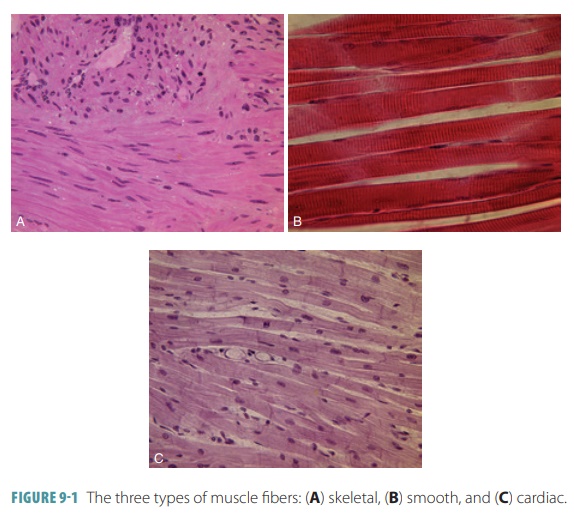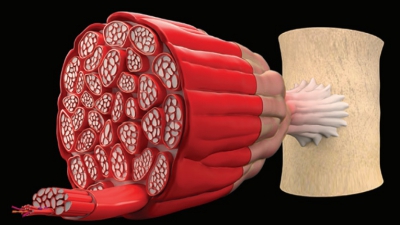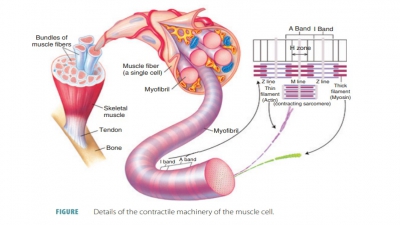Classification of Muscle Tissues
| Home | | Anatomy and Physiology | | Anatomy and Physiology Health Education (APHE) |Chapter: Anatomy and Physiology for Health Professionals: Support and Movement: Muscle Tissue
The three types of muscle tissue are: skeletal, cardiac, and smooth.
Classification
of Muscle Tissues
The three types of muscle tissue
are: skeletal, cardiac, and smooth (TABLE
9-1). Of these, skeletal and smooth
muscle cells are elongated, and are known as muscle
fibers.


Skeletal Muscles
Skeletal muscles are composed
mainly of skeletal muscle tissues. The fibers are the longest muscle cells and
are striated. Skeletal muscle attaches to bones and is the only type of muscle
that is consciously controlled. It is, therefore, referred to as voluntary muscle.
Skeletal muscle can, however, also be activated by reflexes. Individual
skeletal muscles are separated from other mus-cles and held in position by
layers of fibrous connective tissue known as fascia. They are the only cells in the body that are always multinucleated.
Skeletal muscle controls overall body mobility. Although contractions may be
rapid, skeletal muscle tires easily and requires rest after short amounts of
activity.
Cardiac Muscle
Cardiac
muscle tissue is found only
in the heart and is made up of striated cells that are connected into
three-dimensional networks (FIGURE 9-1). Cardiac muscle cells are the only type that commonly
branch.
Stimulation to one portion of the
cardiac muscle network passes to the other parts of the network, with the entire
heart contracting as one functional unit. This type of muscle is self-exciting
and rhythmic, repeating contraction and relaxation to cause the heart’s
rhyth-mic contractions. Cardiac muscle contracts at a rela-tively stable rate,
controlled by the heart’s pacemaker, but increased physical activity causes
neural controls to speed up the heart as needed.
Smooth Muscle
Smooth muscle tissue is similar,
but not identical, to skeletal muscle. It is not under voluntary control and
has slow, sustained contractions. Smooth muscle cells have elongated,
spindle-like shapes with tapered ends, but lack striations. They have a single,
centrally located nucleus. Smooth muscle, along with skeletal and cardiac
muscle, is shown in Figure 9-1.
Related Topics


